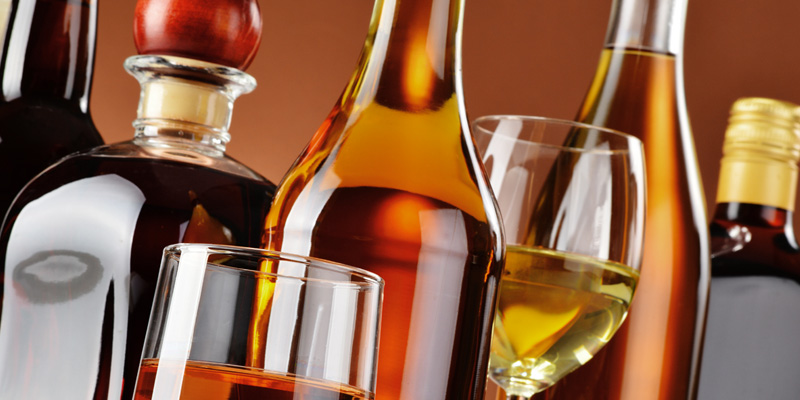The fermentation and distilling processes that keep humanity lubricated share a lot. But they actually start and end differently, which is why you don’t often see brewers adding whiskey to their lineup, or dual beer and winemaking operations.
A quick alcohol refresher course tells us that ethyl alcohol, the type of alcohol that we drink, comes from sugar. When sugar meets yeast, which can come from the air or a pouch you buy at the grocery store, the yeast eats the sugar and releases alcohol and carbon dioxide. When all the sugar is gone, a base alcoholic liquid remains. Yum!
The biggest difference in booze production doesn’t come from the different inputs — grains, grapes or other fruit — but in the chemical makeup of those ingredients. Because all alcohol comes from sugar, the important factor that determines which kind of drink you’re going to end up with lies in how the sugar becomes available to hungry yeast colonies, and how it’s concentrated.
With wine, fermentation is easy. Ripe fruit is filled with sugar and naturally ferments when it’s exposed to the ambient yeasts in the air. Quite simply, crushed grapes will ferment on their own. In fact, that’s how many anthropologists think wine was first discovered in ancient times.
Other fruit, like the apples and pears used in ciders or the berries used in fruit “wines,” undergo the same process, which is mostly crushing and waiting. If you’ve ever forgotten a carton of juice in the fridge and come back to find it fizzy and alcoholic, you’ve witnessed this type of fermentation firsthand.
Unlike wines that start out as sugary fruit, beer begins as grain. Though most beer is made from malted barley, brewers also use corn, rice and wheat to make the fizzy lagers and ales we know so well. Just like the wheat and barley we eat, these grains are primarily made of carbohydrate molecules, not sugar, so brewing means transforming those carbohydrates. In the same way our bodies digest carbs to transform them into energy, brewers make sugars available from the carbohydrates in grains so they can then ferment into glorious, boozy beer. To do so, brewers create a mash by mixing the grains with hot water. Over the course of a few hours, the ground grain releases sugary sweetness into the liquid, affectionately called “wort.” Then, the spent grain is separated from the wort, which ferments into beer.
Hard alcohol can be made from either the wine or beer method. Bourbon, for example, is made from a grain mash, and eau de vie comes from fruit — but the process of strengthening the alcoholic content of spirits is what makes distilling different from other production methods. Yeast can only survive in a solution that’s roughly 15 percent alcohol by volume, so to get high-proof spirits a secondary process is required.
Distilling is that process, and it takes advantage of the different boiling points of water and alcohol. Water boils at 212 degrees, and alcohol boils at 173 degrees, a difference distillers use to make everything from vodka to fruity liqueurs. To put it simply, distillers heat a wort-type liquid or a wine-type liquid to alcohol’s boiling point in a device called a still, then cool the alcoholic steam, which condenses into a liquid, and voila, you’ve got liquor! The base of grain or fruit contributes flavors and aromas, but the thirsty public is left with a much stronger solution than one created by yeasts alone.
Sadly, the distilling process isn’t easily (or safely) recreated at home the way beer and winemaking operations can be, but that doesn’t mean you can’t have fun with booze science. Sometimes, amid the craziness of the holiday season, election season or just a regular Tuesday, it’s nice to know that grapes, grain and science are here to help.

